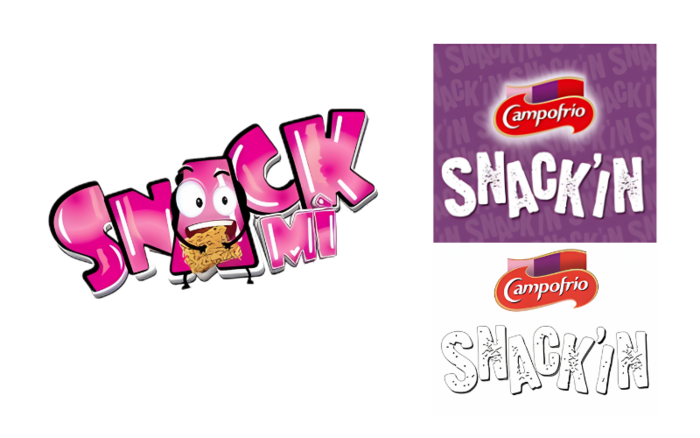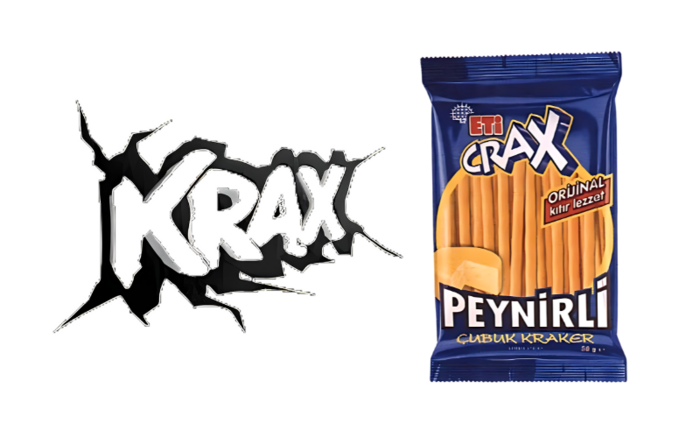
Taking a bite out of IP law: exploring two EUIPO snack cases
Supermarket shelves can be a dog-eat-dog environment, with products and brands vying for consumers' attention alongside the contents of their wallets. This healthy sense of rivalry helps keep prices in check and prevent monopolies. Yet when that same competitive spirit spills beyond the bounds of fair practice, appeal boards and courtrooms become the new arenas of battle, where, very often, Intellectual Property (IP) rights decide the victor.
To appreciate the importance of such proceedings, we need look no further than two recent cases involving the European Union Intellectual Property Office (EUIPO) where snack food brands went head-to-head over their visual presentation. These decisions and the legal reasoning behind them exemplify the value of trademark and design protections for organizations in any industry.
Tools of the trade: trademarks and registered Community designs
While the purposes of trademarks and registered Community designs in the European Union show a degree of overlap, these rights differ in their requirements and utilization. This makes them a fascinating study of how various forms of IP can complement or clash.
Whether they are registered with an IP office or not, trademarks indicate the trade origin of goods and services. Colloquially, they distinguish whatever they are attached to from equivalent deliverables offered by competitors. In order to be registered – and thus avail of the strongest level of legal protection – trademarks need to be distinctive, though not necessarily novel. A sign that unambiguously communicates a commercial source can be a trademark, typically words, images, patterns and the shape of goods or packaging.
On the other hand, Community designs (soon to be renamed EU designs) cover the ornamental appearance of products or their parts. An unregistered Community design, as the name suggests, automatically delivers three years of protection from the time it is made known within the relevant industry. A registered Community design is renewable every five years and can last for a maximum of 25. However, in both cases, the design must be new, have individual character and not be integral to the function of the product.

The snack market is replete with snappy branding and colorful packaging, which, while helping to appeal to impulse buyers, makes it difficult to stand out from the crowd in stores.
It is plain to see that a trademark and a design can subsist in the same subject matter; after all, decorative embossing on a perfume bottle can both be visually appealing and reveal the brand. In the end, registered Community designs protect how something looks, while trademarks serve as commercial signs.
The imaginative leap
Less obvious, however, is the subjectivity this inevitably injects into a jurisprudence that aspires to total impartiality. How to measure perception is resolved by extrapolating the way fictitious persons would interpret the IP involved in a dispute — the "average consumer" or "relevant public" for trademarks and the "informed user" for registered Community designs. While the former is reasonably informed and observant, their attention to detail varies depending on the business sector, and their mental image is imperfect. Meanwhile, the latter is highly observant, aware of prior designs and able to make discerning comparisons.
Though public polls can supplement or replace these tests, by and large, infringement disputes are settled using both the letter of the law and hypothetical interpretations — a delicate, precise balance that makes every decision a case study in IP.
Case #1: "No likelihood of confusion"
Our first example involving snack foods in the EU concerned two trademarks:
- "SNACK'IN," registered for foodstuffs in Class 29, among others – the prior mark
- "SNACK MI," registered for snacks and wholesale / retail services of snacks in Classes 29, 30 and 35 – the younger mark
Campofrío Food Group, the owner of "SNACK'IN," had opposed the registration of "SNACK MI" based on several earlier marks. When the EUIPO rejected the opposition and dismissed a subsequent appeal, a case was brought before the European Court of Justice. There, the General Court found no likelihood of confusion under Article 8(1)(b) of the EU Trade Mark Regulation.

The second of the EU's highest courts found there to be a low likelihood of confusion between the younger mark (left) and Campofrío's various prior registrations. (Image source: InfoCuria)
The Court noted that both trademarks were based on the common word "snack." As a basic part of English vocabulary, this word was descriptive — not distinctive. This was the only similarity; all other elements had substantial differences. Therefore, there was no reasonable likelihood of confusion to the average consumer.
To fully contextualize the perspective of the hypothetical buyer, the Court also considered each design as a whole. It found low overall distinctiveness in both but noted "normal" distinctiveness in the company logo above "SNACK'IN," citing visually striking color and positioning. Other findings included:
- Average phonetic similarity
- Low visual similarity
- Low conceptual similarity
The General Court added that the likelihood of confusion is often low in cases where trademarks coincide in weakly distinctive elements.
Case #2: "Conflict of design"
The second snack dispute covered a less common conflict between two different forms of IP:
- "KRAX," a prior trademark for a snack brand
- "CRAX," a registered Community design for snack packaging
The Board of Appeal of the EUIPO upheld a decision declaring the design invalid based on Article 25(1)(e) of the Community Design Regulation and Romanian Trademark Law Article 36(2)(b) and (c).

The registered Community design (right) related to packaging for flavored breadsticks, but its relevant elements were found to be excessively similar to the prior trademark. (Image source: EUIPO)
The Board recognized the variation in rights afforded by trademarks versus registered Community designs. However, it ruled that these differences did not outweigh the multiple similarities. Particular areas of concern were:
- Spelling: Three out of four letters were the same across the distinctive verbal elements
- Graphic representation: The typography of "CRAX" was notably stylized in a similar way to that of "KRAX"
- Sound: The phonetic elements were aurally similar
According to the Board, the verbal element of the contested design was an almost complete reproduction of the original trademark. The relevant public — here, both the average consumer and informed user — could reasonably conflate the product "CRAX" with the brand "KRAX" given that both existed in the snack food market.
The Board did note a few key differences. Namely, the contested design was for food packaging, while the prior mark was a brand name. However, this packaging was "crucial for the use of the goods" covered by the earlier trademark, indicating a "strong correlation" and "complementarity." Therefore, even this potentially distinguishing element could become a source of misperception.
Ultimately, the Board decided that the registered rights were insufficiently distinguishable and invalidated the Community design.
Takeaway for the IP industry
Although trademarks and registered Community designs are distinct forms of IP with their own sets of regulations and requirements, they both serve to uphold brand identities and carve out space for unique creations in the marketplace. When IP rights holders reflect on the perspectives of informed users and average consumers, they contextualize the law for their situations and gain a better understanding of customer opinion at the same time.
Get in touch with the legal experts at Dennemeyer to let your trademarks and designs reach their maximum potential.
Filed in

Slight variations in evidence can lead to vastly different outcomes in disputes — and prior decisions cannot be relied on as indicators of success.



